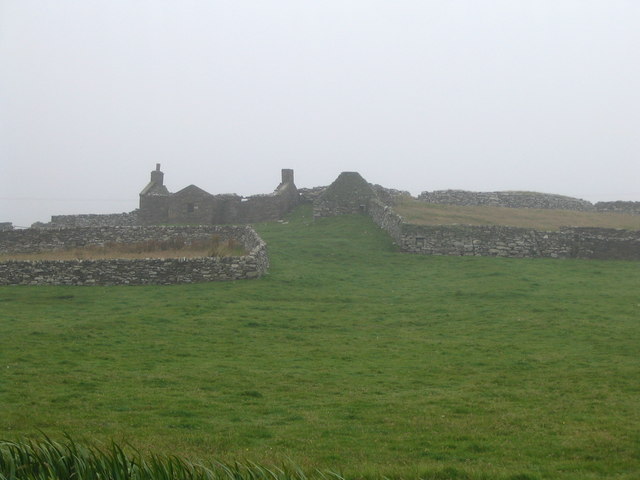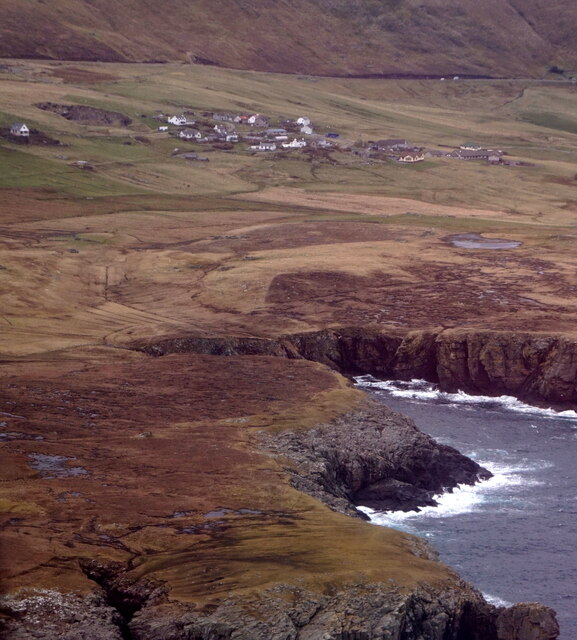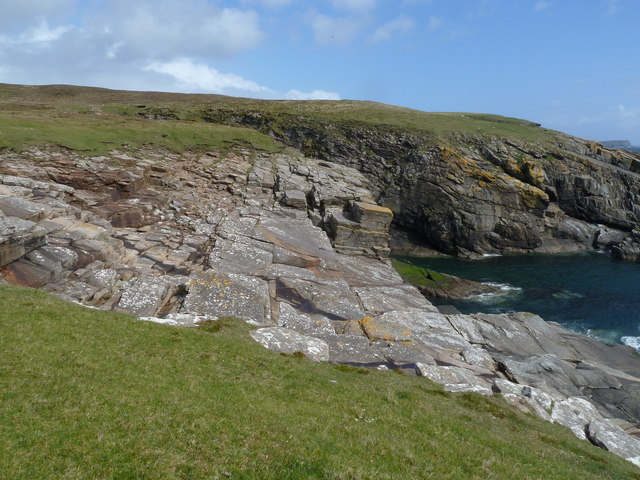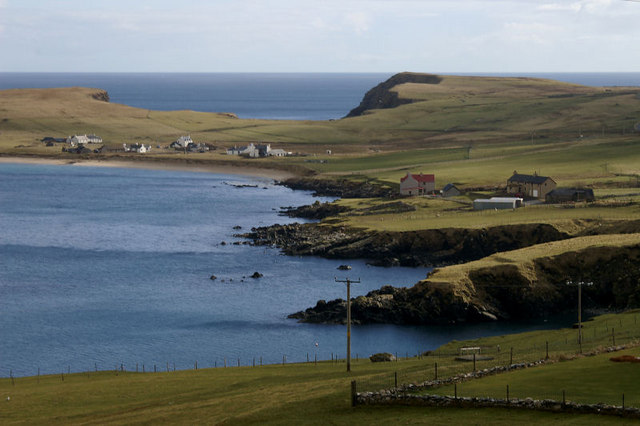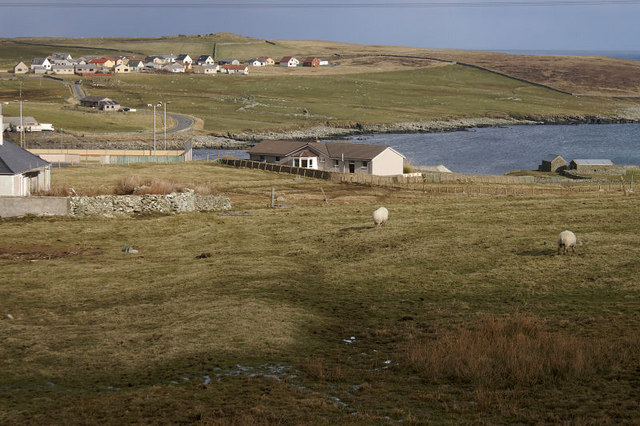Black Geo
Coastal Feature, Headland, Point in Shetland
Scotland
Black Geo

Black Geo is a prominent coastal feature located in Shetland, an archipelago in Scotland. It is specifically classified as a headland or point due to its distinct geographical characteristics. The name "Geo" is derived from the Old Norse word for a narrow inlet or cove, indicating the geological formation of this coastal feature.
Situated on the eastern coast of Shetland, Black Geo is known for its striking cliffs and rugged terrain. The headland juts out into the North Sea, offering breathtaking views of the surrounding coastline. The cliffs, composed mainly of sedimentary rocks, rise to significant heights, creating an impressive spectacle against the backdrop of the ocean.
Black Geo is an important site for wildlife, as it provides a nesting habitat for various seabird species, including gulls, fulmars, and puffins. The surrounding waters are also rich in marine life, with seals often seen basking on the rocks or swimming in the nearby waters.
The headland is easily accessible, with several coastal paths and trails leading to and around Black Geo. These paths provide visitors with the opportunity to explore the area's natural beauty and observe the diverse flora and fauna that call this coastal feature their home.
Due to its exposed location on the eastern coast, Black Geo is also subject to the harsh and unpredictable weather conditions of the North Sea. The strong winds and rough seas create an awe-inspiring atmosphere, attracting photographers, nature enthusiasts, and adventure seekers alike.
In summary, Black Geo is a captivating coastal feature in Shetland, characterized by its dramatic cliffs, abundant wildlife, and stunning views of the North Sea. It offers a unique and immersive experience for visitors, showcasing the raw beauty of this remote Scottish archipelago.
If you have any feedback on the listing, please let us know in the comments section below.
Black Geo Images
Images are sourced within 2km of 59.953704/-1.2595694 or Grid Reference HU4118. Thanks to Geograph Open Source API. All images are credited.
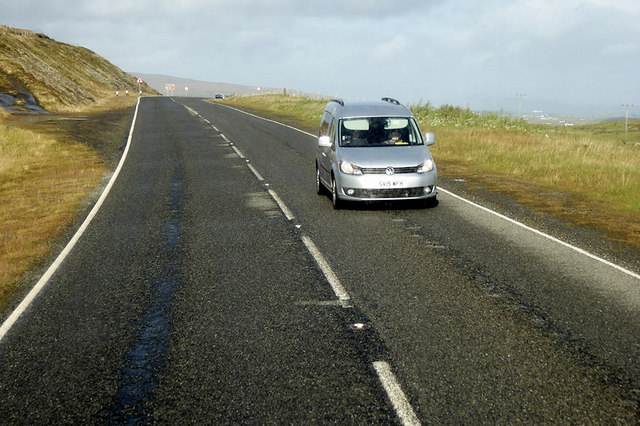
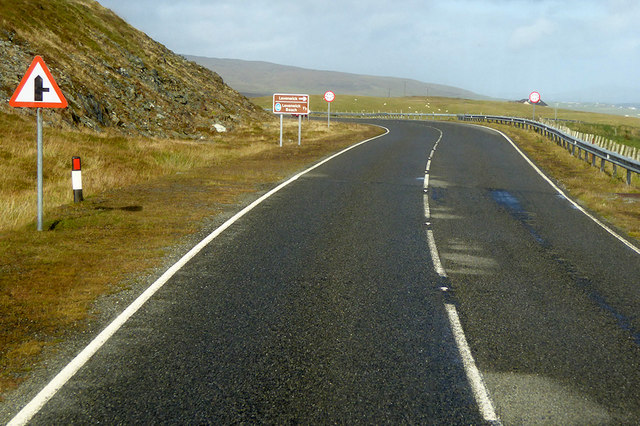

Black Geo is located at Grid Ref: HU4118 (Lat: 59.953704, Lng: -1.2595694)
Unitary Authority: Shetland Islands
Police Authority: Highlands and Islands
What 3 Words
///partly.overcomes.oasis. Near Sandwick, Shetland Islands
Nearby Locations
Related Wikis
Clumlie Broch
Clumlie Broch is an Iron Age broch located on Mainland, Shetland, in Scotland (grid reference HU40451811). == Location == Clumlie Broch is located in Dunrossness...
Levenwick
Levenwick is a small village about 17 miles (27 km) south of Lerwick, on the east side of the South Mainland of Shetland, Scotland. It is part of the parish...
Dunrossness
Dunrossness, (Old Norse: Dynrastarnes meaning "headland of the loud tide-race", referring to the noise of Sumburgh Roost) is the southernmost parish of...
Boddam, Shetland
Boddam is a village on the island of Mainland, in Shetland, Scotland. Boddam is an area of Dunrossness in the South Mainland of Shetland. Although Boddam...
Have you been to Black Geo?
Leave your review of Black Geo below (or comments, questions and feedback).




